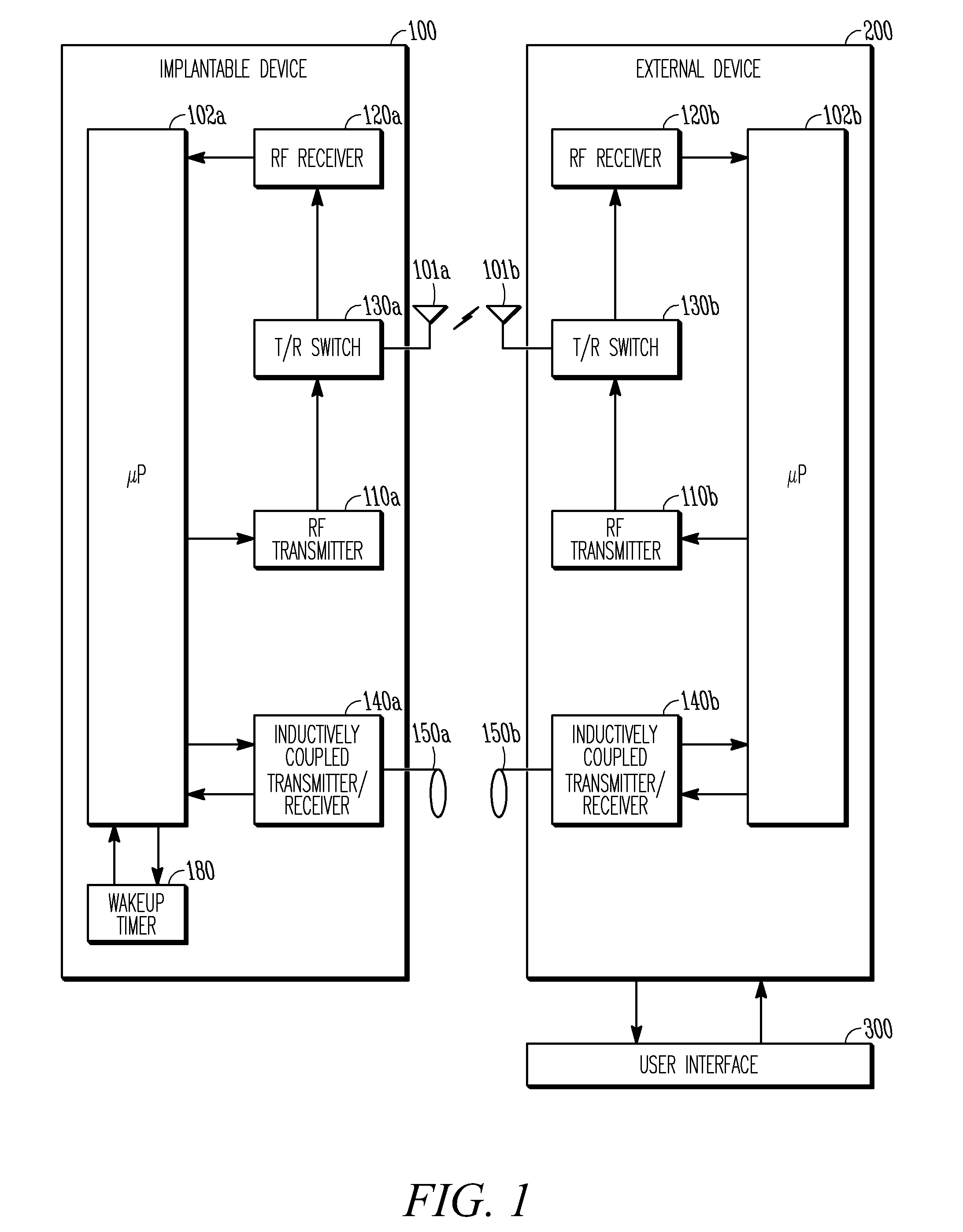System and method for enabling communications with implantable medical devices
- Summary
- Abstract
- Description
- Claims
- Application Information
AI Technical Summary
Benefits of technology
Problems solved by technology
Method used
Image
Examples
Embodiment Construction
Power consumption by an implantable device may be lessened by managing the duty cycle of the RF transmitting and receiving components. Long-range RF telemetry circuitry (i.e., the transmitter and receiver) typically requires power on the order of tens of milliwatts in order to operate. Implantable cardiac devices in use today, on the other hand, are usually designed to operate with average power in the microwatt range. This means that the RF telemetry circuitry must be duty cycled down in order to meet the power budget of such devices. The RF telemetry circuitry of an implantable device can either be powered up or down, referred to as awake and sleep states, respectively. Duty cycling of the implantable device's RF telemetry circuitry can be implemented by a wakeup timer which defines periodic wakeup intervals at which the implantable device powers up its RF circuitry and listens for a transmission from an external device for a specified period of time, referred to as a wakeup windo...
PUM
 Login to View More
Login to View More Abstract
Description
Claims
Application Information
 Login to View More
Login to View More - R&D
- Intellectual Property
- Life Sciences
- Materials
- Tech Scout
- Unparalleled Data Quality
- Higher Quality Content
- 60% Fewer Hallucinations
Browse by: Latest US Patents, China's latest patents, Technical Efficacy Thesaurus, Application Domain, Technology Topic, Popular Technical Reports.
© 2025 PatSnap. All rights reserved.Legal|Privacy policy|Modern Slavery Act Transparency Statement|Sitemap|About US| Contact US: help@patsnap.com



